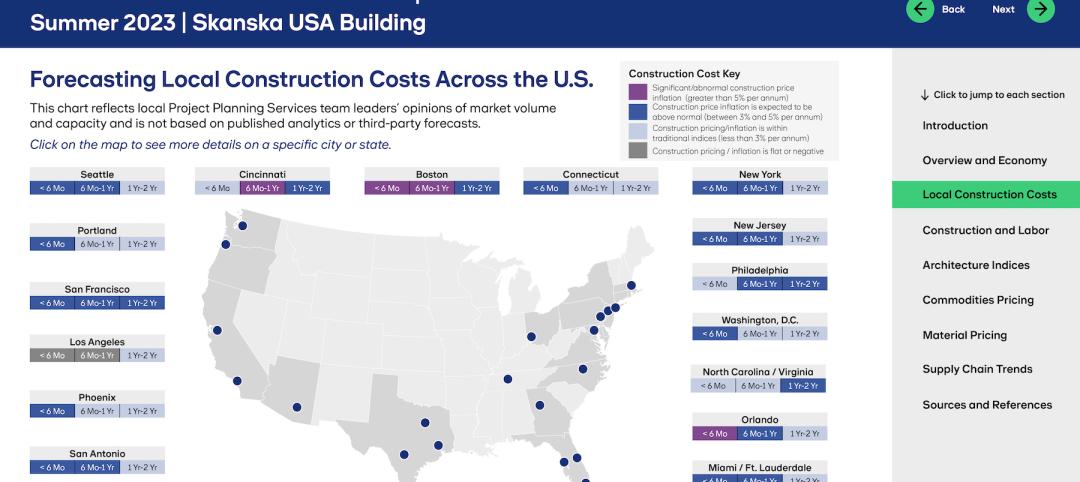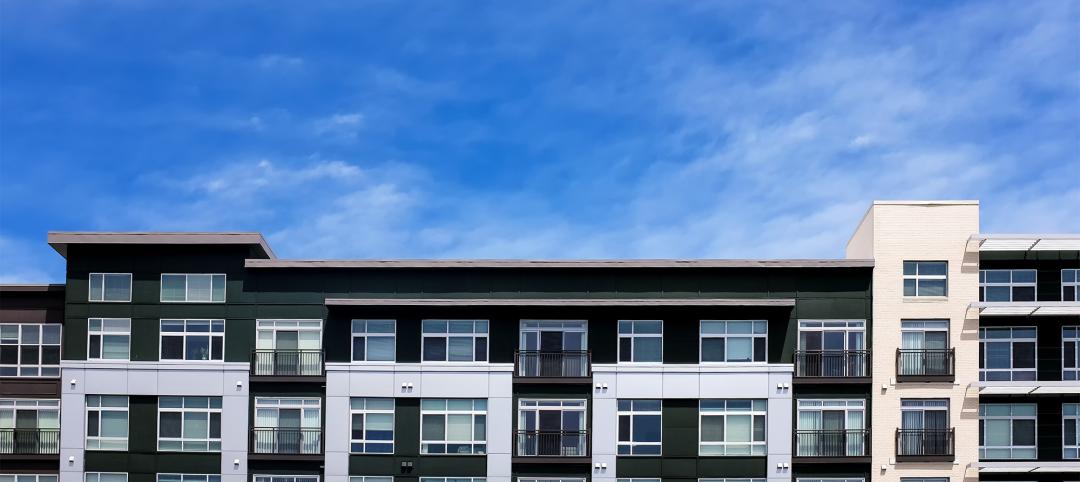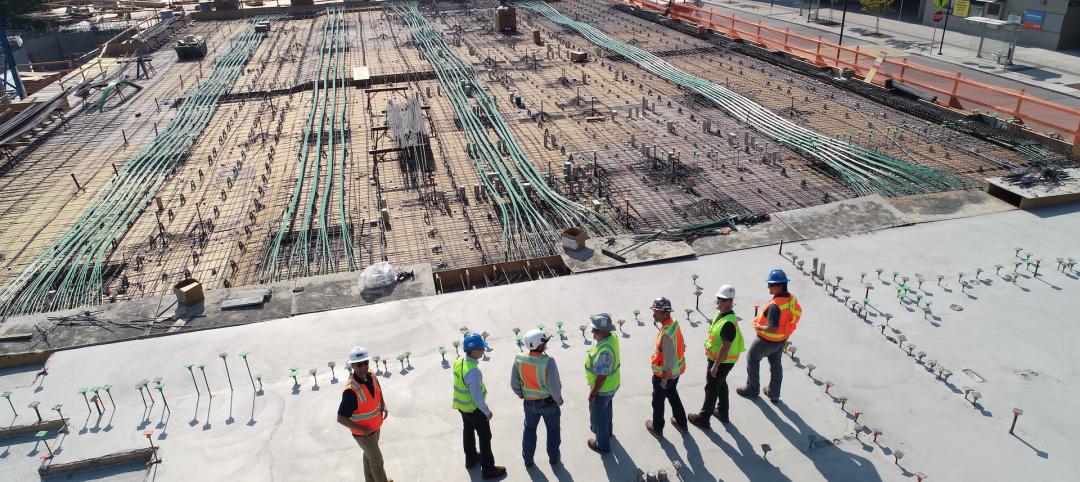Following the American Institute of Architects (AIA) announcement of the approval of a landmark resolution to engage the architectural profession in fighting climate change, a new report reveals why architects and engineers will need to redouble their efforts to reach 2030 Commitment goals.
“The findings of this new report underscore why it is imperative that the AIA make climate change a number one priority,” said AIA EVP/Chief Executive Officer Robert Ivy, FAIA. “Architects are uniquely positioned to have a significant impact on climate action. AIA is committed to rallying the profession so that together we can make progress towards our net-zero carbon goals by 2030. It’s critical that the architecture, engineering and construction industries come together to take action on this issue today.”
The report—2030 by the Numbers: The 2018 Summary of the AIA 2030 Commitment—amalgamates predicted energy use data in buildings from the 252 firms participating in the 2030 Commitment. Data from the latest report shows participating architects, engineers and owners are making progress to reduce the carbon footprint of buildings but are falling short of program targets.
In 2018, firms were targeting a 70% reduction in predicted energy use from the original baseline. Data from the new report shows that only a 46% reduction has been achieved.
Despite this shortfall, the report also points to progress. The data shows that the projects from the 252 participating firms would reduce $3.3 billion in operating costs and eliminate 17.7 million metric tons of CO2 emissions, which is equivalent to removing 3.7 million passenger vehicles from the road for a year.
AIA and its members are working to improve these results in an effort to meet 2030 Commitment targets. Last week, the AIA announced a landmark initiative to define immediate and long-term efforts to engage the architectural profession in climate action. Currently, the Institute is establishing goals to support mitigation and adaptation using the tenets of the comprehensive and holistic COTE Top Ten framework, now known as the AIA Framework for Design Excellence. Initially, AIA will focus its efforts on designing for energy, economy, and equitable communities. Additionally, the Institute will continue to encourage participation in the AIA’s 2030 Commitment and will work to develop new programs and resources that will support architects in fighting climate change.
Complete details of the report and information on AIA’s 2030 Commitment program can be found on AIA’s website.
Related Stories
Apartments | Aug 22, 2023
Key takeaways from RCLCO's 2023 apartment renter preferences study
Gregg Logan, Managing Director of real estate consulting firm RCLCO, reveals the highlights of RCLCO's new research study, “2023 Rental Consumer Preferences Report.” Logan speaks with BD+C's Robert Cassidy.
Market Data | Aug 18, 2023
Construction soldiers on, despite rising materials and labor costs
Quarterly analyses from Skanska, Mortenson, and Gordian show nonresidential building still subject to materials and labor volatility, and regional disparities.
Apartments | Aug 14, 2023
Yardi Matrix updates near-term multifamily supply forecast
The multifamily housing supply could increase by up to nearly 7% by the end of 2023, states the latest Multifamily Supply Forecast from Yardi Matrix.
Hotel Facilities | Aug 2, 2023
Top 5 markets for hotel construction
According to the United States Construction Pipeline Trend Report by Lodging Econometrics (LE) for Q2 2023, the five markets with the largest hotel construction pipelines are Dallas with a record-high 184 projects/21,501 rooms, Atlanta with 141 projects/17,993 rooms, Phoenix with 119 projects/16,107 rooms, Nashville with 116 projects/15,346 rooms, and Los Angeles with 112 projects/17,797 rooms.
Market Data | Aug 1, 2023
Nonresidential construction spending increases slightly in June
National nonresidential construction spending increased 0.1% in June, according to an Associated Builders and Contractors analysis of data published today by the U.S. Census Bureau. Spending is up 18% over the past 12 months. On a seasonally adjusted annualized basis, nonresidential spending totaled $1.07 trillion in June.
Hotel Facilities | Jul 27, 2023
U.S. hotel construction pipeline remains steady with 5,572 projects in the works
The hotel construction pipeline grew incrementally in Q2 2023 as developers and franchise companies push through short-term challenges while envisioning long-term prospects, according to Lodging Econometrics.
Hotel Facilities | Jul 26, 2023
Hospitality building construction costs for 2023
Data from Gordian breaks down the average cost per square foot for 15-story hotels, restaurants, fast food restaurants, and movie theaters across 10 U.S. cities: Boston, Chicago, Las Vegas, Los Angeles, Miami, New Orleans, New York, Phoenix, Seattle, and Washington, D.C.
Market Data | Jul 24, 2023
Leading economists call for 2% increase in building construction spending in 2024
Following a 19.7% surge in spending for commercial, institutional, and industrial buildings in 2023, leading construction industry economists expect spending growth to come back to earth in 2024, according to the July 2023 AIA Consensus Construction Forecast Panel.
Contractors | Jul 13, 2023
Construction input prices remain unchanged in June, inflation slowing
Construction input prices remained unchanged in June compared to the previous month, according to an Associated Builders and Contractors analysis of U.S. Bureau of Labor Statistics Producer Price Index data released today. Nonresidential construction input prices were also unchanged for the month.
Contractors | Jul 11, 2023
The average U.S. contractor has 8.9 months worth of construction work in the pipeline, as of June 2023
Associated Builders and Contractors reported that its Construction Backlog Indicator remained unchanged at 8.9 months in June 2023, according to an ABC member survey conducted June 20 to July 5. The reading is unchanged from June 2022.

















